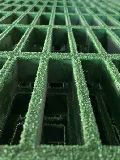loading...
- No. 9, Xingyuan South Street, Dongwaihuan Road, Zaoqiang County, Hengshui, Hebei, China
- admin@zjcomposites.com
- +86 15097380338
- Welcome to visit our website!
frp pressure vessel price
Understanding the Pricing of FRP Pressure Vessels
FRP (Fiber Reinforced Plastic) pressure vessels are essential components in various industries, including chemical processing, oil and gas, water treatment, and many others. These vessels are renowned for their lightweight, corrosion-resistant properties, and high strength-to-weight ratio, making them an excellent choice for storing and transporting fluids under pressure. However, when considering the use of FRP pressure vessels, one might wonder about the associated costs. This article aims to shed light on the factors influencing the price of FRP pressure vessels and what prospective buyers should consider.
Factors Influencing Price
1. Material Composition The primary factor affecting the price of FRP vessels is the type and quality of materials used in their construction. High-quality resin and fibers can significantly increase costs. For example, vessels made with epoxy resins tend to be more expensive than those made with polyester due to their superior strength and chemical resistance.
2. Size and Capacity The dimensions of the pressure vessel substantially impact its price. Larger vessels require more material and labor for construction, which naturally raises the cost. Additionally, the design of the vessel (single compartment vs. multiple compartments) can also affect the pricing.
3. Design Complexity Custom-designed vessels tailored to specific applications usually have a higher price tag than standard models. Engineering and design costs drive up the price, particularly if the vessel needs to meet particular industry standards or certifications.
frp pressure vessel price

4. Manufacturing Process The method used to manufacture the FRP vessel plays a critical role in determining its cost. Techniques such as filament winding and hand lay-up vary in complexity and labor requirements, affecting pricing. Filament winding, which is often used for constructing high-performance vessels, usually incurs higher manufacturing costs due to the advanced technology and equipment involved.
5. Regulatory Compliance For vessels used in industries with strict safety regulations, adherence to standards set by organizations such as ASME (American Society of Mechanical Engineers) can add to the cost. Certification processes and quality assurance measures are necessary to ensure compliance but contribute to the overall expense.
6. Market Demand and Supply Like any commodity, market dynamics play a crucial role in the pricing of FRP pressure vessels. Fluctuations in demand for industrial applications, alongside raw material availability, can lead to price variability. In times of high demand, such as during expansions in the chemical processing sector, prices may rise.
7. Geographical Location The location of both the manufacturer and the end-user can influence costs due to shipping and transportation expenses. Additionally, regional market rates may affect pricing as different areas may have varying costs of labor and materials.
Conclusion
When considering the purchase of FRP pressure vessels, it is essential to understand that their pricing is influenced by a multitude of factors. Potential buyers should evaluate their specific needs, including the type of material best suited for their application, size requirements, and whether custom design is necessary. Furthermore, seeking multiple quotes from reputable manufacturers can help in comparing prices and ensuring the best value. Investing in high-quality FRP vessels might entail a higher upfront cost, but the long-term benefits, such as durability and reduced maintenance expenses, can ultimately make them a cost-effective solution. As industries continue to evolve, the role of FRP pressure vessels will undoubtedly remain significant, underscoring the importance of careful consideration in the procurement process.
-
The Rise of FRP Profiles: Strong, Lightweight, and Built to LastNewsJul.14,2025
-
SMC Panel Tanks: A Modern Water Storage Solution for All EnvironmentsNewsJul.14,2025
-
GRP Grating: A Modern Solution for Safe and Durable Access SystemsNewsJul.14,2025
-
Galvanized Steel Water Tanks: Durable, Reliable, and Ready for UseNewsJul.14,2025
-
FRP Mini Mesh Grating: The Safer, Smarter Flooring SolutionNewsJul.14,2025
-
Exploring FRP Vessels: Durable Solutions for Modern Fluid HandlingNewsJul.14,2025
-
GRP Structures: The Future of Lightweight, High-Performance EngineeringNewsJun.20,2025
